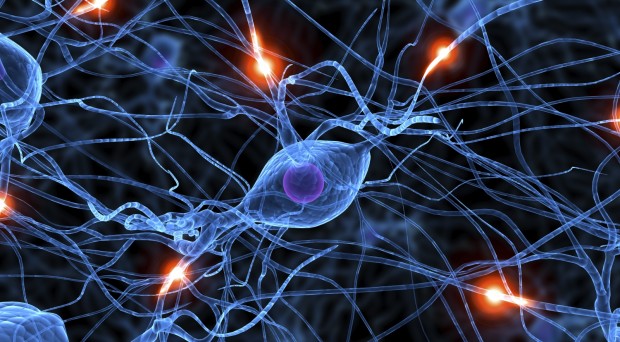
Here we talk with the co-Editors-in-Chief of Molecular Neurodegeneration (Professor Guojun Bu) and Alzheimer’s Research & Therapy (Professors Douglas Galasko and Philip Scheltens), to discuss how the field of neurodegeneration research has changed during their careers and where they see significant progress occurring in the future.
Why are our brains so vulnerable to age?
Guojun Bu (GB): Neurons in the brain are terminally differentiated cells and except for those in two small areas, the vast majority of them cannot regenerate. Thus, age-related changes in our brains, including oxidative stress and the build-up of toxic molecules, present challenges to neurons to handle these insults.
Over time, synapses, the connection among neurons, as well as neurons themselves begin to degenerate, leading to various neurodegenerative diseases. Age-related vascular diseases also contribute to the brain’s vulnerability to age.
Neurons are remarkable in being able to survive and function over a lifespan that may exceed 80 years.
Prof Galasko
Philip Scheltens (PS): I think Prof Bu is right. Our whole body is vulnerable to the aging process, but the brain has the great disadvantage that neurons cannot regenerate and many lifelong conditions silently act negatively on the brain.
Douglas Galasko (DG): I agree, however I would add that neurons are remarkable in being able to survive and function over a lifespan that may exceed 80 years.
Which unanswered biological questions do you think are most key to understanding the aging process?
DG: For me, understanding what causes proteins to misfold and form insoluble aggregates in aging is key. As is determining how some people live to be 100 or older with relatively preserved cognitive abilities and minimal brain pathology.
We need to know more of the role of genetic and environmental factors, and their interplay.
Prof Scheltens
GB: I would ask what causes synapses to degenerate and neurons to die? What are the key events in the aging brains that lead to increased neural toxicity? It’s also important that we better understand how various genetic and environmental risk factors interact to present vulnerability to age-related neurodegenerative diseases in aging brains.
PS: I agree, we need to know more of the role of genetic and environmental factors, and their interplay.
Since your careers began, have you noticed a shift in the global perspective on age-related disorders?
GB: I started my career in Alzheimer’s disease (AD) research when the protein APOE4 was discovered as a strong genetic risk factor. In the last 20+ years, we have learned tremendously about the etiology of the disease and established promising targets for therapy. However, we still don’t have a cure.
With the improvement of health care, we’ve seen a continuous growth of our aging population, facing age-related disorders with age-related neurodegenerative diseases leading the way. It is encouraging to see an increased investment in research by multiple governments around the globe, which should lead us closer to a cure in the next decade or two.
PS: I completely concur with Prof Bu. Compared with ten years ago the awareness and level of funding has gone up, however it’s still not at the level of comparable diseases such as cancer or heart diseases.
It is encouraging to see an increased investment in research by multiple governments around the globe.
Prof Bu
DG: I’d also add that the failure of clinical trials for Alzheimer’s disease has been sobering and has led to deep rethinking of when we should intervene and how.
At the same time, basic and translational research into Alzheimer’s and neurodegenerative disorders has burgeoned, as have international collaborative efforts.
As Prof Scheltens mentioned, funding hasn’t kept pace relative to other disorders, but the outlook may be improving as more countries are facing the health and social costs of Alzheimer’s.
Where do you see research in your field moving in the next ten years?
GB: Towards further defining how various genes and gene variants cause changes in aging brains that then lead to neurodegenerative diseases. We also expect to see more team-based science using integrative, multidisciplinary and systems-based approaches.
PS: I could not agree more with Prof Bu.
DG: I would also add that developing a better understanding of how genetics and aging interact and impact biomarkers will be key.
GB: We also expect to see more research in addressing subtypes of diseases with a goal to develop precision medicine.
Which areas of research into aging and neurodegenerative disease do you think hold the most potential to tackle the problems faced by an aging population?
GB: Clinical biomarker studies that allow for early disease diagnosis and prediction, such that vulnerable individuals can be identified for prevention treatment, will play an important role. So too will the discovery of new genes, gene variants and disease pathways leading to new drug targets for therapy.
We’re just starting to understand and use biomarkers and much is to be gained from their further development.
Prof Scheltens
DG: I agree, biomarkers and genes for early detection and identifying effects of therapy will be important.
PS: As mentioned by Professors Bu and Galasko, we’re just starting to understand and use biomarkers and much is to be gained from their further development.
DG: I’d also add that it will be important to determine treatment strategies against age-related mechanisms that may broadly impact a number of disorders, not just Alzheimer’s disease. One such example is the discussion of a clinical trial of metformin in aging, with multiple health outcomes.
 Guojun Bu
Guojun Bu
Editor-in-Chief, Molecular Neurodegeneration
Guojon Bu is Professor of Neuroscience at the Mayo Clinic Jacksonville, where he leads the Neurobiology of Alzheimer’s Disease Laboratory. The lab’s ultimate goals are to understand why apoE4 is a strong risk factor for late-onset Alzheimer’s disease and to develop therapeutic strategies targeting this pathway.
 Douglas Galasko
Douglas Galasko
Editor-in-Chief, Alzheimer’s Research & Therapy
Douglas Galasko is a clinician-researcher at the University California, San Diego (UCSD), who focuses on Alzheimer’s Disease, Parkinson’s Disease and other disorders resulting in cognitive impairment and dementia. He currently serves as Director of the UCSD Shiley-Marcos Alzheimer’s Disease Research Center (ADRC).
 Philip Scheltens
Philip Scheltens
Editor-in-Chief, Alzheimer’s Research & Therapy
Philip Scheltens is Professor of neurology and Director of the Alzheimer’s Centre at the VU Medical Centre in Amsterdam. His main clinical and research interests are Alzheimer’s disease, vascular dementia, frontotemporal dementia, magnetic resonance imaging, PET imaging and biomarkers.
Thomas Appleyard & Neisha Jobanputra
Latest posts by Thomas Appleyard & Neisha Jobanputra (see all)
- The past, present and future of neurodegeneration research - 9th October 2015
Comments